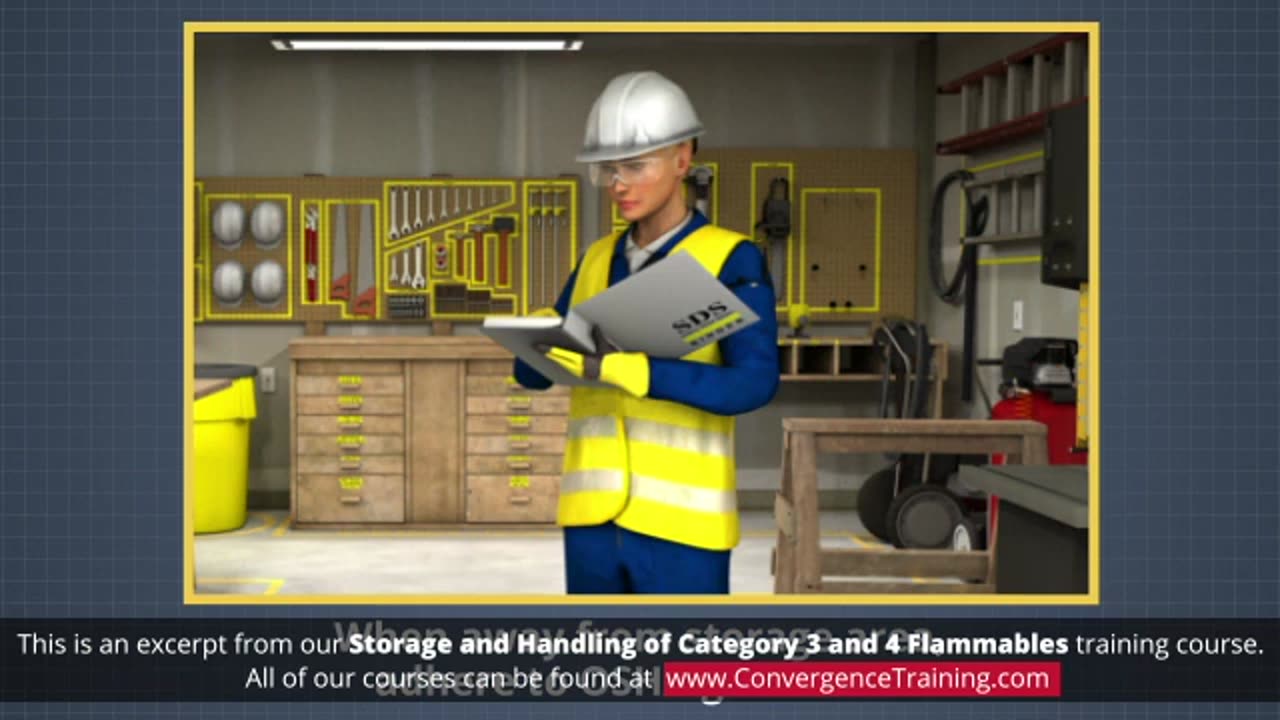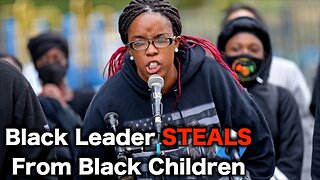Premium Only Content

Storage and Handling of Category 3 and 4 Flammables Training
**Training on Storage and Handling of Category 3 and 4 Flammables** is vital for maintaining workplace safety, especially in industries dealing with fuels, solvents, or chemicals. Proper training ensures compliance with fire codes, reduces fire risks, and protects personnel and property. Below is a structured outline for the training course:
---
### **Training Objectives**
- Understand the characteristics of Category 3 and 4 flammable liquids.
- Learn proper storage practices to minimize risks.
- Master safe handling procedures to prevent accidents.
- Familiarize with fire prevention measures and emergency response protocols.
---
### **Course Content**
#### **1. Introduction to Flammables**
- **Definition and Classification:**
- **Category 3 Flammables:** Flash point >23°C (73°F) but ≤60°C (140°F).
- **Category 4 Flammables:** Flash point >60°C (140°F) but ≤93°C (200°F).
- Examples of Category 3 and 4 flammables:
- Category 3: Paint thinners, gasoline blends, some alcohols.
- Category 4: Diesel fuel, certain heating oils.
- **Hazards of Flammable Liquids:**
- Fire and explosion risks.
- Toxicity and health effects from vapor exposure.
---
#### **2. Storage Requirements**
- **Regulatory Standards:**
- OSHA 1910.106 (Flammable and Combustible Liquids).
- NFPA 30 (Flammable and Combustible Liquids Code).
- **Approved Storage Containers:**
- Safety cans and drums with proper labeling.
- Secondary containment systems to prevent leaks or spills.
- **Storage Locations:**
- Well-ventilated areas away from heat sources.
- Distance from ignition points (open flames, sparks, hot surfaces).
- Separation from incompatible materials (e.g., oxidizers).
- **Fire Protection:**
- Use of fire-resistant cabinets for storage.
- Maintaining appropriate fire extinguishers (e.g., Class B extinguishers).
---
#### **3. Handling Precautions**
- **Safe Handling Practices:**
- Use grounded and bonded equipment to prevent static discharge.
- Transfer flammables in designated areas with spill containment.
- Avoid overfilling containers to allow for liquid expansion.
- **Personal Protective Equipment (PPE):**
- Flame-resistant clothing, chemical-resistant gloves, and goggles.
- Respirators if working in areas with inadequate ventilation.
- **Control of Vapors:**
- Keep containers tightly closed.
- Ensure proper ventilation in storage and handling areas.
---
#### **4. Spill and Leak Response**
- **Immediate Actions:**
- Evacuate the area and eliminate ignition sources.
- Contain the spill using absorbents or dikes.
- Notify supervisors and emergency response teams.
- **Cleanup Procedures:**
- Use non-sparking tools for cleanup.
- Dispose of waste as per hazardous waste regulations.
- **Documentation and Reporting:**
- Record the incident and actions taken to prevent recurrence.
---
#### **5. Fire Prevention Measures**
- **Eliminating Ignition Sources:**
- Prohibit smoking and open flames near storage areas.
- Use explosion-proof electrical fixtures.
- **Workplace Safety Systems:**
- Installation of ventilation systems and vapor detectors.
- Conducting regular safety audits and inspections.
- **Employee Training:**
- Ongoing education on flammable liquid safety.
- Emergency evacuation drills.
---
#### **6. Emergency Response Procedures**
- **Firefighting Protocols:**
- Use correct fire extinguishers for flammable liquid fires.
- Do not use water on flammable liquid fires unless specifically advised.
- **Evacuation Plans:**
- Clearly marked exits and assembly points.
- Assigning responsibilities to safety personnel (e.g., fire wardens).
- **First Aid Measures:**
- Treating burns or vapor exposure.
- Immediate medical attention for severe incidents.
---
### **Practical Training Component**
- Hands-on demonstration of:
- Proper transfer techniques using grounded equipment.
- Safe storage in flammable cabinets.
- Responding to simulated spills or fires.
- Familiarization with safety data sheets (SDS) for flammable liquids.
---
### **Course Tools and Resources**
- **Visual Aids:** Charts showing flash points, storage setups, and spill responses.
- **Interactive Sessions:** Role-playing exercises for spill and fire emergencies.
- **Compliance Materials:** Quick reference guides for OSHA and NFPA standards.
---
### **Certification**
Participants should pass a written test and a practical demonstration to receive a certificate of competency in handling Category 3 and 4 flammables.
Would you like assistance in developing detailed training materials, such as slide decks, safety checklists, or emergency drill scripts?
-
 20:24
20:24
HSESafetyInformation
7 months agoKABULI PULAO RECIPE - Original 40+ KG Afghani Meat Pulau Prepared - Street Food Qabili Plav Recipe_2
35 -
 LIVE
LIVE
The Chris Salcedo Show
11 hours agoDems Have Always Been For Giving Your Money To Illegals
787 watching -
 14:41
14:41
IsaacButterfield
1 day ago $1.27 earnedFree Speech Is DEAD In Australia!!
32.2K23 -
 59:59
59:59
SGT Report
11 hours agoIT'S ALL THEATER -- Seth Holehouse
22.4K37 -
 LIVE
LIVE
BEK TV
23 hours agoTrent Loos in the Morning - 10/03/2025
346 watching -
 LIVE
LIVE
The Bubba Army
22 hours agoDiddy BEGS for Mercy in Judge Letter - Bubba the Love Sponge® Show | 10/03/25
2,067 watching -
 LIVE
LIVE
ZENNY
3 hours agoBO7 IS HERE BOT POV MF HAHAHAHA 6v6 PG18+ | UNFILTERED CHAT | CURSES AND BAD
78 watching -
 15:17
15:17
Actual Justice Warrior
2 days agoBLM Leader CONVICTED Of Fraud
23.5K39 -
 13:19
13:19
Zoufry
2 days agoThe Grandpa Gang Who Robbed a Bang For $16 Million
23.5K4 -
 2:18:45
2:18:45
The China Show
3 days agoChinese Citizens STRIKE BACK + China's Sick New Punishment Exposed - #282
24K7
